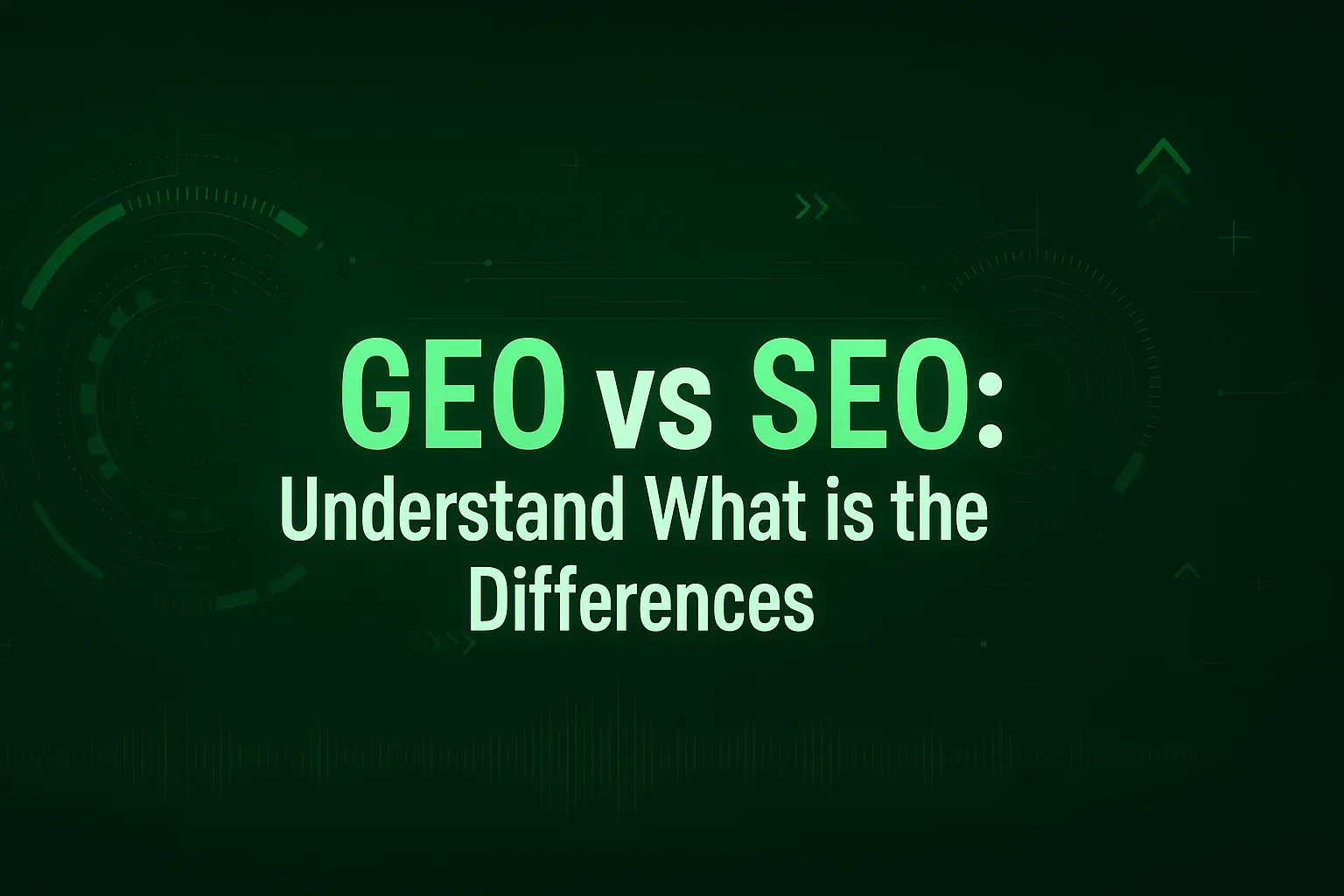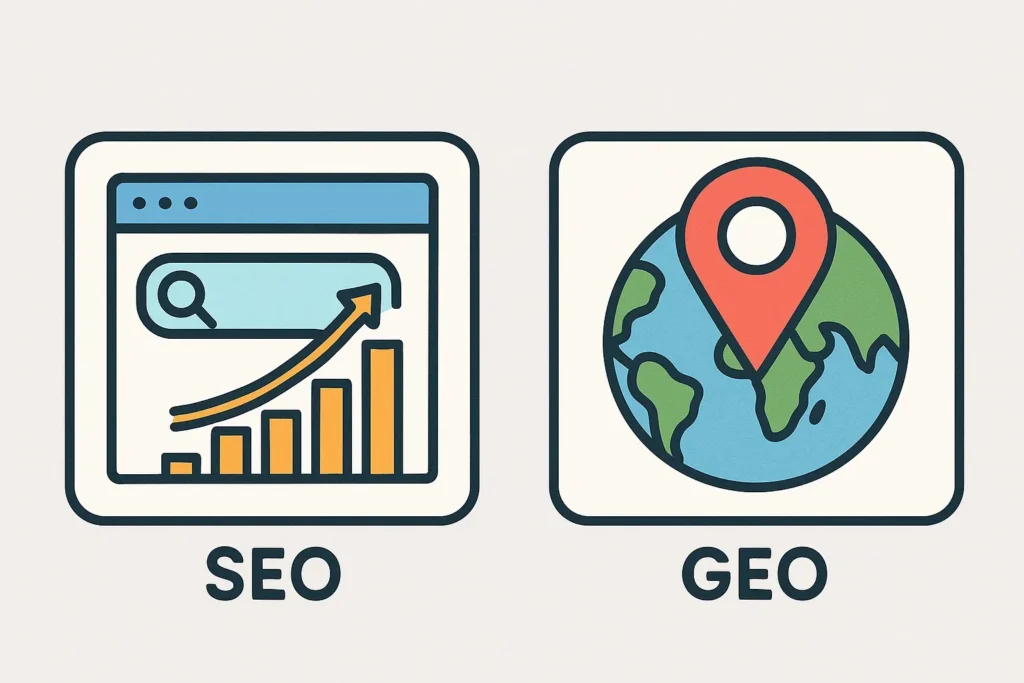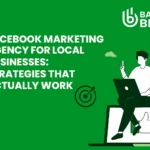
Table of Contents
Summary
Generative Engine Optimization (GEO) is changing how we get noticed online alongside traditional SEO. Traditional SEO involves getting high rank on Google using keywords, backlinks and technical website fixes, while GEO influences how your content can appear in AI tools like ChatGPT by being clear-cut, organized, and credible. SEO and GEO work in conjunction. SEO drives traffic to your website, while GEO gets you included in AI’s answers. To succeed in today’s marketplace, businesses should use SEO and GEO to reach their customers through search engines and other AI-powered tools. Adaptability is crucial to be visible and competitive.
Introduction
GEO vs SEO is more than just a marketing buzzword – it’s a fundamental shift, that is probably already affecting you and your website traffic, whether you know it or not.
In the past ten years, SEO practitioners have mainly had the same playbook: find keywords through research, develop quality content, generate backlinks, and allow the Google traffic to take care of itself. I can recall spending countless hours adjusting title tags and anticipating #1 on Google to the level of a victory.
But here’s where it all changed: AI does not search the web the same way people do.
Although you’re still optimizing for traditional Google search, millions of potential consumers are now instantly getting answers from AI tools like ChatGPT, Perplexity, or Google’s new Search Generative Experience (SGE) and they all do this without viewing your carefully optimized site pages.

This is the landscape that generative engine optimization (GEO) is designed for.
Unlike traditional search engine optimization (SEO), which focuses on getting your website high on these searches, GEO ensures that your content is noted, cited, and appears directly in AI-generated answers.
The sad truth? Your competitors already are adapting. They understand this new curve, while you might still be investing in old-school SEO tactics that are yielding minimal results.
In this no-nonsense how-to guide, you’ll learn exactly what Generative Engine Optimization (GEO) is and how it is different from traditional SEO. You’ll better understand why mastering this new knowledge is a necessity for today’s AI-driving search landscape, and we’ll teach you actionable methods for optimizing content for both human users and AIs. Plus, we will include real examples along the way to make things a little more clear.
What Is SEO, and What Is GEO?
Before we compare the differences, let’s take the time to clarify exactly what is meant by SEO and GEO.
What is SEO (Search Engine Optimization)?
SEO is the act of trying to improve the visibility of your website in traditional search engines like Google, Bing, or Yahoo. You want to improve your rank to show up higher in search results when users input queries that relate to your content.
Core Elements of SEO:
- Keywords: searching and using words that people search, like “best ad copy examples.”
- Backlinks: Building links from other trustworthy sites improves your authority.
- Writing blogs that are helpful, interesting, and well-organized is what makes content valuable.
- Technical Optimization: Making sure that pages load instantly, perform well on mobile devices, and are indexed correctly.
How SEO Works:
Search engines look at your content using very complex rules (algorithms) that use all of these elements to evaluate and sort your content, and your proper SEO will align your site with these rules so you can be found by the right audience.
Example:
If you type in “best seo conferences” in Google, your top results are pages that are well optimized with relevant keywords, they are pages that have a good number of backlinks pointing to it, as well as having contributed to the user experience enough to become trusted by Google’s ranking system.
What is GEO (Generative Engine Optimization)?
GEO represents a newer plan for optimizing content for AI search tools such as ChatGPT, Perplexity, or Google’s AI Overviews. These generative engines do not simply provide lists of links; they summarize different sources and offer all results in a conversational style.

Core Elments of GEO:
- Clarity: Use (easy to understand) common language that AI can easily understand.
- Structure: Set forth content with clear headings, lists, and bullet points to aid the AI in locating factual information.
- Authority: Provide correct, factual information from authoritative sources so that AI can trust it.
How GEO Works:
AI engines use the internet to scan the web, pulling snippets of content that’s already optimized for AI and generate short, accurate answers. GEO makes your content “AI-ready”, so it is included in the generated answers.
Example:
When you ask ChatGPT, “What’s the best way to rank a blog post?” you might get a very detailed step-by-step explanation taken from a GEO-optimized blog, complete with the source.
GEO vs SEO:
| Aspect | SEO (Search Engine Optimization) | GEO (Generative Engine Optimization) |
|---|---|---|
| Definition and Purpose | Improve site ranking on traditional search engines (Google, Bing) | Optimize content for inclusion in AI-generated answers (ChatGPT, Bard) |
| Target Platforms | Google, Bing, Yahoo | AI tools like ChatGPT, Google AI Overviews, Perplexity |
| Ranking Method | Algorithms using 200+ factors (keywords, backlinks, UX) | AI identifies clear, structured, and authoritative info |
| Optimization Focus | Keywords, backlinks, technical SEO | Content structure, clarity, expertise, comprehensive coverage |
| Key Metrics | Organic traffic, Keyword rankings, CTR | Citation frequency in AI answers, inclusion rate, engagement |
| Content Focus | Detailed, keyword-rich content to drive visits | Clear, concise answers AI can easily understand and use |
| User Behavior | Clicking search results to visit website | Reading answers directly in AI-generated responses |
| Traffic Source | Website visits from search engines | AI citations and responses without website visits |
| Update Frequency | Algorithms updated quarterly or yearly | AI models updated continuously with new knowledge |
How SEO and GEO Work: Step-by-Step with Simple Examples
How SEO Works
- Crawling: Search engines use bots to crawl the web and discover pages through links.
- Indexing: Pages that are discovered are added to a database.
- Ranking: When you search, the search engine ranks pages according to a set of filters:
- relevancy of your keywords.
- backlinks, in quality and quantity.
- User experience signals such as time on page or bounce rate.
- Technical factors such as page load speed or mobile friendly.
Example:
If you write a blog about “how to bake chocolate chip cookies” and you properly optimize for keywords and backlinks, Google would probably rank you near the top for people searching your phrase.
How GEO Works
- Content Ingestion: AI systems read web content continuously (live and/or during training).
- Knowledge Extraction: AI finds facts, entities, and relationships in your content.
- Relevance Determination: If a user asks a question to AI, the AI finds the most reliable and clear sources.
- Response Creation: AI synthesizes information and may cite your information if that information:
- Is clear (not ambiguous).
- Is clearly readable, so easy to extract facts.
- Demonstrates expertise and good information you can trust.
Example:
If you provide a straightforward, step-by-step list on your blog answering “How to bake chocolate chip cookies?” ChatGPT may copy/paste your instructions in its answer below and give your site a source even if users don’t click on your link.
Why It Matters: SEO vs GEO in Today’s World
- SEO attracts traffic to your site because of its high rankings in search results.
- GEO takes it a step further by having your information highlighted in the instant answers of AI building brand influence with no click-throughs.
Together, SEO and GEO will dominate the entire landscape of how consumers find answers today, whether they want to click links or interact with an instant AI response.
How GEO and SEO Work Together
1. Shared Foundation: Quality Content
Quality content that is relevant and has depth will benfit both. Good content will rank well in search engines and give the AI/Chatbot all the clear information it can use.
2. Content Strategy
Use headings (H2’s and H3’s, etc.) for SEO readability and to make it easier for AI to extract information from your website. Include FAQ’s, so those are straight forward questions AI can answer, clearly. Become familiar with structured data (schema) for richer and easier search result snippets and for AI parsing.
3. Practical Implementation
- Audit existing content: Identify high-performing SEO content that can be optimized for GEO with minimal changes.
- Expand keyword research: Include natural language questions AI users ask, not just traditional search queries.
- Cross-channel measurement: Track both search rankings and AI citations to understand full content performance.
The Bottom Line: Adapt or Become Invisible
The search landscape is changing more than most marketers can track. Today, you are no longer just competing for top spots on Google–now you are competing for a presence in AI-generated answers also.
The smart thing to do? Do not choose between SEO and GEO. Use both.
Start off by optimizing one of your better pages for extraction for AI. Make your facts clearer, structure your content a bit more effectively and see how it performs. Then, incorporate these changes across the rest of your site.
The businesses that will be successful in 2025 and beyond will not be the ones with the largest budget, and they will not be the businesses that have the best SEO track record—they will be the ones that are agile enough to see new opportunities first and will jump on those opportunities first.
There are many AI tools out there that claim to assist with SEO or GEO; however, there is only one platform that does both at a high level Writesonic. It explains it perfectly with “Track & Boost Your Brand’s Visibility in AI Search & Traditional Search.” Writesonic combines cutting-edge AI monitoring with powerful SEO functionality to help companies rank and be successful when competing in the AI-driven response duels on Google search
Conclusion
The future is clear: use SEO plus GEO to for your brand to be discovered online. That way, your content appears on Google AND in AI tools, such as ChatGPT. Don’t let your competitors get a jump on you start to use both services today. Do you want to help your brand get discovered? Try Badiya Brand so that you can quickly distribute your content to others. Your customers are looking- make sure they find you!
https://writesonic.com/blog/geo-vs-seo
https://icarusmarketing.uk/geo-compared-to-seo
https://www.linkedin.com/pulse/search-engines-ranking-factors-chris-essey-ml59e
https://studiohawk.com.au/blog/the-stages-of-search-engine-crawling
https://www.quora.com/How-does-user-engagement-time-on-site-bounce-rate-affect-SEO




